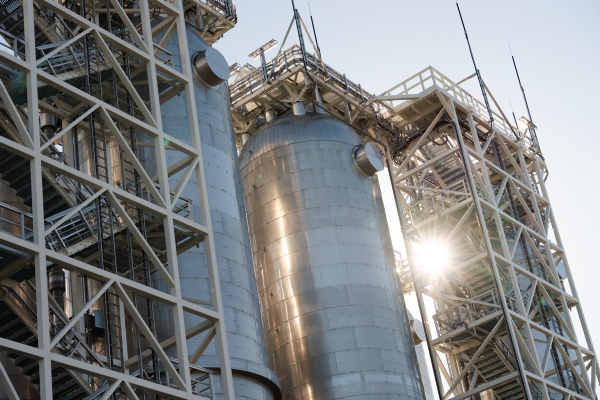The news
- The companies in the Northern Lights CCS consortium today announced the first successful injection of CO2 into a storage site 2,600 metres below the seabed off the Norwegian coast.
- This test injection is to be followed in a few months by CO2 from a Norwegian cement factory in Brevik (Heidelberg Materials). The CO2 will be separated, compressed and shipped by special vessels to the receiving terminal on the Norwegian coast. From there, it will be pumped through a 100 km long pipeline into the CO2 storage site under the seabed.
- The project is heavily subsidised. The companies have not yet published any data on the costs of CO2 disposal. Little is also known about the energy consumption of the value chain.
Why is it important?
- Northern Lights is the first operational CCS project in Europe that aims to make CCS a Europe-wide business. Further large-scale projects are to follow in the Netherlands, UK and Denmark.
- The Norwegian project is considered an important test case for the entire industry and for the climate strategies of industry in Europe.
- The CCS industry is under pressure worldwide. Most projects in recent decades have failed due to technical problems or excessive costs.
- Previous Norwegian projects (Sleipner and Snøhvit) had a much simpler operational approach. They only involved the separation of already highly concentrated CO2 from a neighbouring natural gas field. Nevertheless, there were also major technical problems here.
The Business Case
- The CCS joint venture Northern Lights is owned equally by Equinor, Shell and TotalEnergies. In the first phase of expansion, capacity is expected to be 1.5 million tonnes of CO2 per year. In the second phase, starting in 2028, this is expected to increase to a total of 5 million tonnes of CO2 per year.
- Northern Lights has so far announced contracts or preliminary agreements with five customers: Stockholm Exergi (biomass/BECCS), Heidelberg Materials (cement), Celsio (waste incineration), Yara (fertiliser) and Ørsted (biomass/power).
- Theoretically speaking, the JV could achieve annual sales of €300 million in the second phase, assuming a CO2 price of €100 per tonne (currently €70) and assuming that the capture facilities and land transport to the coast (e.g. in northern Germany) can be handled at a full cost of €40 per tonne (IEA estimates).
- However, few figures from actual practice are available so far. As usual, years of start-up problems are also to be expected. And whether a profit is possible at the end of the day seems questionable. Without significantly higher CO2 prices or decades of subsidies, there is probably no business case in sight.
- The first expansion stage was mainly financed by the Norwegian government (70-80%) as part of the large-scale Longship project, which covers the entire chain from CO2 separation to transport by ship to the storage site and injection into the storage site.
- Norway and the oil companies involved hope that this will open up a new business segment and enable them to continue using fossil natural gas.
- In addition to traditional industrial companies, cement plants and waste incineration plants, the natural gas industry is particularly interested in the success of CCS. Blue ammonia, blue methanol or blue hydrogen could then be produced as low-carbon fuels from fossil natural gas as before. These technological paths compete with green fuels, which can be produced from electrolysis hydrogen (from solar or wind power) and CO2.
- More on CCS in Norway and worldwide. Please read my latest report:
https://www.energycomment.de/ccs-can-we-just-bury-our-co2-problem/
Sources and further reading
- https://www.reuters.com/sustainability/climate-energy/norways-northern-lights-ccs-project-starts-operations-with-first-co2-injected-2025-08-25/
- https://www.equinor.com/news/20250825-first-co2-volumes-stored-at-northern-lights
- https://totalenergies.com/company/projects/carbon-capture-and-storage/northern-lights-norway
- Image: © Equinor Torstein Lund Eik
Your Comment
- Please use our contact form

Leave a Reply